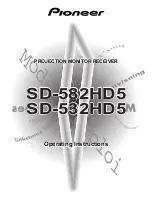
12
ABB
Use of nomograph for PBA 2 potential device
1. Calculate the sum of C1 + C2 + C3 using capacitance
values of Fig. 3. Mark that value on the first scale on the
monograph.
2. Mark C1 on the second scale
3. Draw a straight line through the points on the C1 + C2 +
C3 scale and the C1 scale extending to the reference line.
4. Locate the system voltage, which the PBA2 device is
measuring on the line volts scale.
5. With a straight line connect the points on the reference
line (where the first connecting line intersects the reference
line) and the line volts scale, extending to the dial volts scale.
6. Read the correct value for the dial setting of the voltage
adjustment on the dial volts scale.
7. Read the number of turns buck or boost to switch in on
the furthest left scale opposite the C1 + C2 + C3 point.
Example
C1=300, C2=3000, C3=3000,
Line Volts=138 kV
C1+C2+C3=300+3000+3000=6300 Picofarads
Reading the Scale – Dial Volts=87
Turns Boost=42
Unusual Combinations
Unusual combinations of voltage, bushing, potential device
and burden can be checked for workability by calculation.
Unit power factor burdens are assumed.
Equation (3) above means that the open circuit tap voltage
e will be workable if it lies between 3000 volts and 7600
volts. Of course with e as large as 7600 it would not be
possible to carry any burden on the device, since the
operating tap voltage rises with added burden, and 7600 is
the limiting voltage on the transformer primary.
If the exploration of the paragraph above shows the
combination to be workable then its burden carrying ability
can be roughly checked by the following:
The reactance XC of equation (4) must be in the range of
125,000 to 800,000 ohms for 60 hertz, or 104,000 to
670,000 ohms for 50 hertz.
Let ex = maximum permissible reactance
voltage.
then ex =
(7600)
2
- e
2
(5)
Max. watts = ex
x
e
XC
K
(6)
Constant K from empirical equation K = .95 + .078XC/
100,000 but not less than 11.
Application Notes
Heater
Each device contains two vitreous enameled resistors of
1200 ohms each. These are to be energized from an
external source for the purpose of preventing the internal
sweating of the device. Sweating is objectionable from the
point of view of corrosion and also it may temporarily affect
some of the high voltage insulation resulting in adjustment
unbalance. The resistors may be connected series,
parallel or singly and may in any arrangement be energized
by either 115 or 230 volts giving a range of 5.5 to 88 watts.
The suggested arrangement of the two in parallel at 115
volts gives 22 watts of heating.
Protective Gap
The protective gap across the primary of each device is
sealed to prevent modification of its setting by reason of
atmospheric changes. It is set to breakdown at 15 to 16
kV 60 hertz, which is sufficiently high to permit operation of
the device indefinitely at line-to-line system voltage. The
gap will flashover if a short, or overload, is placed on the
output of the device, since the primary voltage of the
device rises in proportion to the output watts. Continued
arcing of the gap will not cause damage for the reason that
the current which can flow is limited to a very low value by
the impedance of the condenser bushing.
Over voltage Operation
These potential devices may be operated at over voltages
up to line-to-line potential for several hours without damage.
Over voltages will result if one or two lines of ungrounded
system become grounded.
Fusing of Burdens
Inasmuch as the possible output is limited by the protective
gap there is no object in attempting to protect burdens by
use of fuses.


































